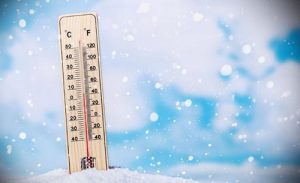 Peeling, flaking, and discoloration are not what you want to see on the surface of pavement. To help avoid these issues, tune in to the weather forecast before you apply sealer. That’s because weather conditions can greatly affect the performance and durability of applied sealer.
Peeling, flaking, and discoloration are not what you want to see on the surface of pavement. To help avoid these issues, tune in to the weather forecast before you apply sealer. That’s because weather conditions can greatly affect the performance and durability of applied sealer.
What’s the best temperature to seal a driveway?
The ideal conditions for application are during the day when pavement and ambient temperatures are at least 50°F and rising, and no rain is forecasted for 24 hours. If these recommendations are not followed, the procedure will not yield desired results.
How does administering your driveway sealer in low temperatures affect final application?
Applying sealer below recommended temperatures can lead to issues such as tracking, power steering marks, discoloration, and reduced durability. As pavement temperatures fall below 50°F, it becomes more difficult for the sealer to adhere to the pavement. The binder in sealer applied in colder temperatures also becomes harder and more difficult to fuse and stick together to form an effective film. Poor adhesion and film formation will cause the sealer to come off more readily.
What happens to asphalt pavement sealers when applied below 50°F?
Asphalt pavement sealers are water-based emulsions. During the drying and curing process, water evaporates off and the “solid” ingredients come together to form a film and adhere to the pavement. The solid ingredients come closer together as water leaves the system until they touch and “coalesce,” which means they flow into each other to form a bond (particularly the binder). The binder in the sealer is the “glue” that holds the film together (known as cohesion), as well as sticking to the pavement (known as adhesion). As the temperature lowers, the binder becomes harder, making it more difficult to cohere and adhere to the surface. In severe cases this may result in the film cracking and flaking off. In milder cases the film may exhibit discoloration, increased power steering marks or tracking, and lower durability.
How does cold weather affect drying?
The evaporation rate of water slows down as temperature decreases. The drying rate of sealer at 50°F is considerably slower than it is at 80°F. For instance, it may take sealer twice as long to dry at 50°F compared to 80°F. Other weather-related factors that will slow dry rates are high humidity, overcast conditions, and a dew point within 5° of the temperature. When a pavement sealer retains water, it will stay soft and be more vulnerable to peeling, tracking, and power steering marks.
Rather than putting on more coats (of sealer) in cold weather, reserve this time for wearing them only. Warmer temps will be here before you know it. Spring—and sealer season—is in the air!


 Paul Raymond /
Mar 6 , 2018
Paul Raymond /
Mar 6 , 2018 


